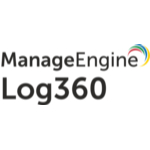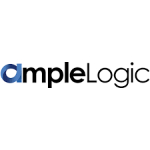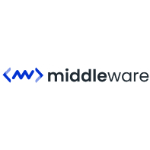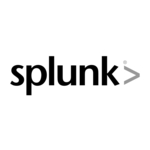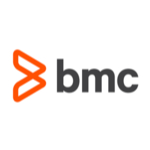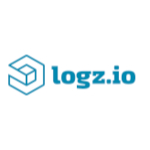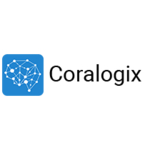
TechnologyCounter provides genuine, unbiased real user reviews to help buyers make informed decisions. We may earn a referral fee when you purchase through our links, at no extra cost to you.
List of 15 Best Log Management Software
Showing 1 - 15 of 25 products
ManageEngine Firewall Analyzer
Software by ManageEngine.
ManageEngine Firewall Analyzer is a network security device management solution that helps optimize firewall performance, enforce compliance, proactively manage threats, monitor traffic and bandwidth consumption, and streamline firewall management fo...Read ManageEngine Firewall Analyzer Reviews
ManageEngine Log360 is a log management and analytics solution that streamlines your organizations security and compliance processes. With advanced features like real-time event correlation, threat intelligence, and user behavior analytics, Log360 he...Read ManageEngine Log360 Reviews
SolarWinds Threat Monitor, the all-in-one solution for monitoring and managing network security. With its advanced features and user-friendly interface, Threat Monitor offers businesses of all sizes a powerful tool to easily identify and respond to p...Read SolarWinds Threat Monitor Reviews
PhonePad, the efficient and user-friendly software designed to streamline your communication processes. With its advanced features interface, PhonePad is the perfect solution for managing all your calls, messages, and contacts in one convenient platf...Read PhonePad Reviews
AmpleLogic Electronic Logbook is a all-in-one solution for efficient data recording and management. Designed to streamline your organizations record-keeping process, this software offers user-friendly features security measures to ensure accuracy and...Read AmpleLogic Electronic Logbook Reviews
Logit is a solution for all your decision-making needs. With its advanced statistical algorithms and user-friendly interface, Logit empowers users to make data-driven decisions with ease. Say goodbye to guesswork and hello to the power of Logit...Read Logit Reviews
Middleware Log Monitoring is a tool designed to streamline the monitoring process of middleware logs. With its advanced technology and user-friendly interface, it allows businesses to efficiently monitor and analyze their log data, ensuring seamless...Read Middleware Log Monitoring Reviews
Retrospective, the powerful software designed to enhance your teams productivity and efficiency. With its user-friendly interface features, Retrospective allows for seamless collaboration and insightful retrospectives, empowering teams to continuousl...Read Retrospective Reviews
Shipbook, a revolutionary software that will streamline and optimize your shipping processes. With Shipbook, managing shipments, tracking orders and monitoring inventory has never been easier. Our user-friendly interface features make it the perfect...Read Shipbook Reviews
LOGIQ enables you to harness the power of machine data analytics for applications and infrastructure by unifying data types like logs, metrics, databases, and APIs on a single platform with 1-click simplicity...Read LOGIQ Reviews
Splunk Light is a data analysis tool designed for small to medium-sized businesses. With its intuitive interface features, Splunk Light allows businesses to efficiently collect, analyze, and visualize data to gain valuable insights and make informed...Read Splunk Light Reviews
TrueSight Operations Management is a software solution designed to provide businesses with real-time insights into the performance and availability of their IT infrastructure. With advanced analytics and monitoring capabilities, it empowers companies...Read TrueSight Operations Management Reviews
Logz.io is a and innovative platform that offers real-time cloud monitoring and analytics to help businesses of all sizes streamline their operations and enhance their overall performance. With advanced features tools, Logz.io is the go-to solution f...Read Logz.io Reviews
Humio is an all-in-one log management and observability platform that helps businesses gain real-time insights into their data. With its user-friendly interface and powerful search capabilities, Humio allows users to easily collect, store, and analyz...Read Humio Reviews
Coralogix is a software that streamlines log management for businesses of all sizes. With its advanced features and user-friendly interface, Coralogix allows for efficient and organized management of logs, leading to enhanced insights, improved produ...Read Coralogix Reviews
- What Is Log Management Software?
- Top Reasons Why Businesses Need Log Management Software?
- What Are the Top Key Features of Log Management Software?
- What Are the Top Benefits of Log Management Software?
- What Are the Steps to Choose the Right Log Management Software?
- What Are the Types of Log Management Software for Different Industries?
- What Are the Technology Trends for Best Log Management Software?
- What Are the Deployment Options for Log Management Software?
What Is Log Management Software?
Log management software is a software application utilized for the purpose of monitoring, collecting, analyzing, storing, and disseminating notifications derived from data obtained from diverse sources. The logs might originate from several sources such as an application server, database, web server, cloud environment, and other similar entities.
Log management systems enable firms to gain a comprehensive overview of the operations, performance, and security of their system.
It aids individuals in promptly and effectively identifying concerns. The utilization of log management tools is quite advantageous in safeguarding the integrity of one's system, as it aids in the identification and examination of malevolent actions and system misconfigurations.
Additionally, top log management tools aid in the identification of faults that may be promptly examined, monitored, and addressed. Moreover, the data obtained from logs can be utilized for the purpose of generating reports and discerning places that want enhancement.
Consequently, the efficiency of business processes is enhanced, leading to greater performance. Furthermore, it is possible to preserve previous data for subsequent utilization and analysis. Log management software is an efficacious instrument for enterprises seeking to enhance the efficiency of their operational procedures.
Top Reasons Why Businesses Need Log Management Software?
1. The objective is to implement automated mechanisms for monitoring and tracking log behavior in order to detect potentially suspicious or harmful activities.
2. One potential strategy for enhancing visibility in IT operations involves the utilization of an aggregated perspective of log data.
3. Delivering timely alerts and real-time notifications to promptly address potential hazards.
4. One important task in managing a system is to monitor its performance and engage in capacity planning through the examination of logs.
5. The task at hand involves the identification and subsequent handling of network traffic that exhibits signs of potential threat or malicious intent.
6. To ensure adherence to regulatory requirements, it is imperative to maintain and conduct thorough analysis of log data.
7. The ability to automatically identify security weaknesses and discern patterns in attacks.
8. One of the key tasks is to oversee the overall condition of the system, which encompasses factors such as the duration of uninterrupted operation and the extent to which the system is accessible to users.
9. Optimize the process of collecting and analyzing log data.
10. Enhance incident response capabilities by conducting a comprehensive analysis of the alterations and occurrences linked to a security breach.
11. Log management systems are imperative to ensure the preservation of backups for essential log data, since they serve as crucial evidence for documenting events.
12. The objective is to discern patterns and correlations among various systems in order to gain a deeper understanding.
13. One potential approach to enhance security measures is to provide integration and data sharing capabilities among various security systems, hence facilitating enhanced protection.
14. Employ sophisticated analytics techniques to get valuable insights from log data.
15. The process of visualizing log data is employed to facilitate intuitive reporting and analysis.
What Are the Top Key Features of Log Management Software?
1. Centralized Log Management: Log management software facilitates the consolidation and administration of all log data inside a unified and centralized repository. This feature enhances the accessibility, searchability, and analyzability of logs.
2. Log Search & Analysis: Log management system commonly offers robust searching and analytics functionalities, enabling users to efficiently locate, observe, analyze, and generate notifications based on log data.
3. Alert Filtering & Management: Log management tools possess the capability to detect and classify diverse categories of log issues, afterward notifying users on predetermined events. This functionality enables users to engage in proactive system monitoring and promptly detect faults.
4. Automation: The integration of the best log management software with automation tools facilitates the automation of common operations, including log rotation, human log reading, and log archive destruction.
5. Security & Compliance: The utilization of log management software facilitates compliance with regulatory requirements by conducting log audits to identify potential threats and uphold the integrity of security measures.
6. Flexible Reports & Analytics: The utilization of log management sytems facilitates the generation of diverse forms of reports and analytics, encompassing visual representations such as charts, graphs, and dashboards. This feature enhances users' ability to visually represent their log data.
7. Cross-Platform Compatability: The capability of log management tools to gather logs from many platforms, including both on-premise and off-premise environments, is essential.
What Are the Top Benefits of Log Management Software?
The top benefits of log management software include:
1. Improved Security: Top log management tools facilitate the aggregation of logs from many sources inside an organization, enabling the analysis of these logs to identify any anomalies or potential security issues.
This technology has the potential to preemptively identify and mitigate cyber threats, hence enhancing the proactive capabilities and response efficiency of cybersecurity experts.
2. Improved Visibility: Log management tools plays a crucial role in offering a comprehensive understanding of system activity, application performance, and user-generated data. This facilitates the evaluation of organizational systems' performance and the identification of areas for enhancement.
3. Automation: Top log management tools facilitate the automation of specific operations, including the gathering, analysis, and generation of reports for data. This can facilitate enhanced operational efficiency and decrease the need for extensive human work inside businesses.
4. Better Compliance: The utilization of the best log management software facilitates organizational adherence to diverse rules and industry norms. Log management systems enable firms to efficiently store, monitor, and administer compliance-related data, thereby ensuring adherence to all regulatory requirements.
5. Better Troubleshooting: The best log management tools play a crucial role in expediently identifying mistakes and anomalies. This aids organizations in promptly identifying the root causes of problems and implementing effective solutions.
What Are the Steps to Choose the Right Log Management Software?
1. Identify your needs: Prior to commencing the search for suitable log management software, it is imperative to ascertain and delineate one's distinct requirements and goals.
When designing a system, best log management tools is important to carefully consider many factors such as the types and quantity of data that need to be collected, the requirements for the user interface, and the possibilities for automation.
2. Research the product market: It is vital to possess a comprehensive understanding of the diverse log management software solutions that are currently accessible in order to facilitate an informed decision-making process.
It is advisable to search for items that possess characteristics and capabilities that align most effectively with the specific requirements of your organization. To enhance comprehension of the product offers, it is advisable to engage with a variety of academic sources like as reviews, white papers, and customer feedback.
3. Analyze the prospective solutions: Conduct experimentation and implementation of various ideas that are financially feasible. During this period, it is advisable to conduct a thorough analysis of the characteristics, functionalities, and financial implications of various log management systems in order to ascertain the most suitable option for your specific requirements.
4. Evaluate the vendor: The best log management software is vital to conduct a thorough evaluation of any vendors under consideration in order to ascertain the procurement of a product that exhibits superior quality while offering optimal value. Evaluate their customer service and satisfaction track record and solicit feedback from other users regarding their experiences.
5. Ask for a trial period: I kindly request the provision of a trial term in order to do a comprehensive evaluation of the goods. The best log management tools is advisable to engage in a trial of the software in order to ascertain the presence of all required features and functionalities.
6. Make a decision: Upon conducting thorough research and assessments, individuals should now possess the necessary information to make a well-informed conclusion regarding the most suitable log management software for their business requirements.
What Are the Types of Log Management Software for Different Industries?
There are various categories of log management software designed for diverse businesses, encompassing a wide range of options.
1. Server Log Management Software: The tool is commonly employed for the purpose of gathering, examining, and retaining logs generated by server operations. The utilization of diagnostic tools aids in the identification of issues and facilitates the monitoring of server usage, hence ensuring optimal performance.
2. Network Log Management Software: The purpose of this system is to gather and retain network logs originating from routers, switches, firewalls, and other network devices. The utilization of this technology aids administrators in the identification of potential security issues and the optimization of network performance.
3. Database Log Management Software: The purpose of this system is to gather and retain log data originating from database servers. Administrators are able to identify and address performance issues, as well as enhance query execution speeds, through the utilization of this tool.
4. Application Log Management Software: The purpose of this system is to gather and retain logs generated by programs operating on various platforms. The utilization of this tool aids administrators in assessing the performance of applications, identifying and resolving issues, as well as enhancing the overall user experience.
5. Security Log Management Software: The primary function of this system is to gather and retain logs originating from security systems, including Intrusion Prevention Systems (IPS) and Security Information and Event Management (SIEM) platforms.
The utilization of the best log management tools aids administrators in the identification of security threats and the implementation of preventive measures against potential assaults.
What Are the Technology Trends for Best Log Management Software?
There are three emerging trends for best log management software:
1. Automation - The implementation of automated log management processes, specifically the conversion of log-based alerts into actionable tickets, results in a reduction of the time needed to identify and handle issues.
Automation facilitates the rapid analysis and retrieval of logs for crucial information, while also providing the capability to automatically read and classify log data.
2. Cloud-Based Storage - Cloud storage facilitates the distant storage and universal accessibility of logs, allowing users to view them from many locations, including their homes or offices.
Furthermore, cloud storage exhibits robust security measures and a high level of dependability, rendering it an optimal solution for the secure retention of logs.
3. Scalability - The scalability of log management software is a crucial requirement. The architecture of software should be such that it accommodates the growth of a business, facilitating the seamless addition of more users or servers when the organization undergoes expansion.
What Are the Deployment Options for Log Management Software?
The available deployment choices for log management software are contingent upon the specific vendor and product being considered.
Log management software is frequently implemented in either a cloud-based or on-premises architectural framework.
1. Within a cloud-based framework, the top log management tools are entrusted to the oversight and administration of a third-party service provider, commonly recognized as a Software-as-a-Service (SaaS) provider. This particular deployment methodology entails no initial expenses for hardware setup and necessitates just minimum ongoing maintenance.
2. In contrast to on-premises deployments, which typically necessitate the utilization of a distinct server or virtual machine, cloud deployments solely necessitate a connection to the service provider. On-premises implementations, conversely, frequently offer enhanced security configuration capabilities and customizable functionalities.
3. Cloud deployments are often more cost-effective compared to this alternative choice, since they do not require additional expenses for hardware and software installation.
Additionally, this alternative option often incurs higher costs due to the need for regular maintenance. The suitability of a cloud or on-premises deployment may vary depending on the size of the company and the complexity of its log management requirements.
